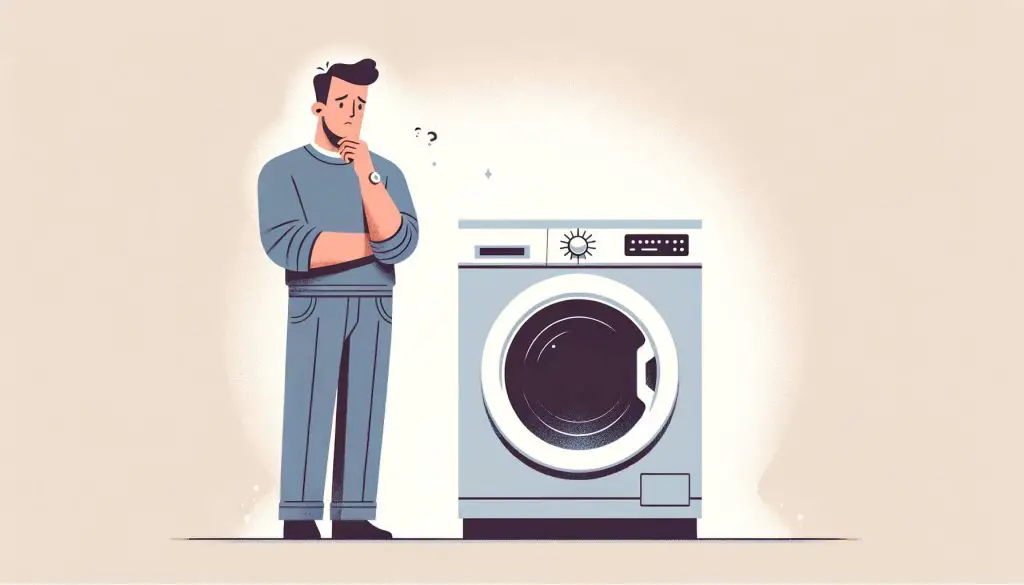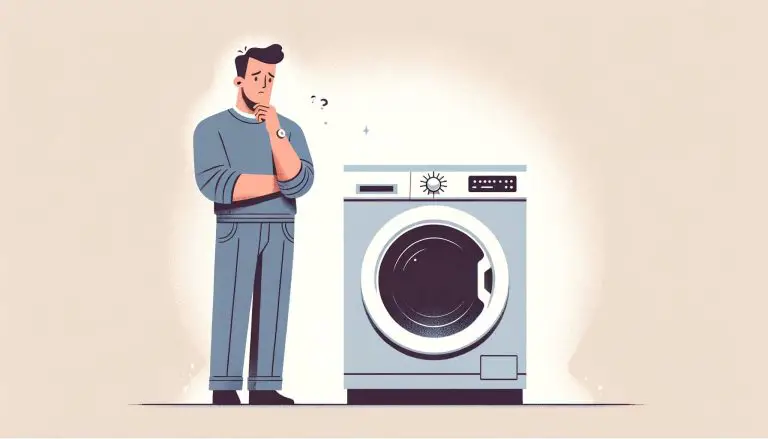Is your dryer drum not turning, but you can hear the motor running? Well, there is a good chance the belt has broken.
Tumble Dryer belts come in various sizes and lengths. While there are standard sizes, you may need to measure your dryer’s drum to determine which size is the right fit.
Dryer belts are not universal. The size, length, and material of dryer belts vary significantly across different dryer models and brands. However, you can always find a belt that precisely matches the specifications of your specific dryer model.
In this article, we will delve deep and explain the essential things you need to know about your dryer belts and what to do when you suspect they’re faulty.
Table of Contents

Are dryer belts universal?
There are a few components on your dryer that may be universal to some extent but not your dryer drum belt.
Dryer drum belts are not the same for all dryers. Every dryer model and brand has their unique dryer belts that fit it.
However, some modern dryers are such that they can operate using universal dryer belts. Universal belts can be used across multiple brands but for only specific sizes.
Brands such as Whirlpool dryer belt, GE dryer belt, Samsung dryer belt, Maytag dryer belt, and Kenmore dryer belt may be compatible with universal dryer belts.
Original Equipment Manufacturer (OEM) dryer belts are those that are supplied by the manufacturer of your tumble dryer.
They are the best dryer belts to replace with since they fit best, and extend the life of your dryer.
How to Determine the Right Belt for Your Dryer
The question you may be asking yourself is, how do I know what dryer belt I need?
It’s easy to determine the appropriate belt size for your dryer drum belt. Here are some tips to find the right belt to purchase:
- Identify Your Dryer Model
Check the manufacturer’s label on your dryer, often found inside the door or on the back. It is typically found on a silver or white tag located either around the opening where you load your clothes, or on the top part of the machine’s frame. - Measure the Belt
If for some reason, you can’t find the dryer model number, do a manual measurement. Remove the belt from the dryer if it’s still attached and stretch it out fully on a flat surface to straighten any twists or curls. Measure the length of the belt from one end to the other; this is best done by running the tape measure along the entire length of the belt. Use a flexible tape.
Universal vs. Brand-Specific Dryer Belts
When selecting a dryer belt, you’ll often come across two main options: universal and brand-specific belts.
While OEM dryer belts are best, Each type has its own set of advantages and drawbacks.
Universal dryer belts
| Pros | Cons |
|---|---|
| Versatile – Fits a wide range of dryer models | Fit Issues – May not match dryer specifications perfectly |
| Readily Available – Generally available in stores and online | Reduced Durability – Might wear out quicker |
| Cost-Effective – Often less expensive than brand-specific options | Performance Concerns – Can lead to slipping or misalignment |
| Convenient – Ideal for quick replacements | Limited Options – One-size-fits-most design might not suit all models |
Brand-Specific Belts
| Pros | Cons |
|---|---|
| Perfect Fit – Tailored for specific models | Higher Cost – Usually more expensive |
| Optimal Performance – Meets exact requirements of the dryer | Availability – May need to be specially ordered |
| Durability – Made of higher quality materials | Limited Retailers – Often sold through specific stores or manufacturer |
| Warranty Compatibility – May be required to maintain dryer’s warranty | Model Discontinuation Issues – Hard to find belts for older or discontinued models |
How to change a dryer belt
You can replace your dryer belt by yourself. The process may vary slightly depending on your dryer brand and model.
Here are the general steps to change your dryer belt:
- Unplug the dryer’s power cord for safety.
- Unthread the screws and remove the top panel. Detach the control panel if necessary.
- Remove the front panel(s), disconnecting the door switch wire.
- If present, remove the bulkhead behind the front panel, disconnecting any sensor wires.
- Depress the idler pulley to release tension and remove the old belt from the pulley and motor.
- Slide the old belt over the front of the drum to remove it.
- Place the new belt over the drum with the grooved side inward.
- Loop the belt on the idler and drive pulleys in a zig-zag pattern.
- Rotate the drum manually to align the new belt.
- Reinstall the bulkhead, connect sensor wires, and replace braces.
- Replace the front panel(s), reconnecting the door switch wire.
- Reattach the top panel and control panel.
- Plug the power cord back in.
Maintaining Your Dryer Belt
Proper maintenance can extend the life of your dryer belt and ensure your dryer runs efficiently.
Here are some tips for maintaining your dryer belt:
- Regular Inspection:
- Frequently examine the belt for any signs of wear and tear.
- Look for cracking, fraying, or thinning, which are indicators of a belt nearing the end of its life.
- Inspect the alignment of the belt to ensure it hasn’t slipped off track.
- Avoid Overloading:
- Consistently overloading your dryer puts extra strain on the belt, leading to premature wear.
- Follow the manufacturer’s guidelines on load capacity to prevent overburdening the belt.
- Balance loads evenly to distribute the weight and reduce strain on the belt.
- Clean the Interior:
- Regular cleaning of the dryer’s interior, including the drum, helps prevent lint and debris build-up.
- Accumulated debris can cause the belt to work harder, leading to unnecessary stress.
- Check and clean the idler pulley and motor area where lint can accumulate, affecting belt performance.
- Lubricate Moving Parts:
- Occasionally, lubricate the idler pulley and motor bearings if recommended by your dryer manufacturer.
- Use a manufacturer-approved lubricant to ensure compatibility.
- Monitor Tension and Alignment:
- Ensure the belt is properly tensioned as per the manufacturer’s specifications.
- A belt that’s too tight or too loose can cause wear and impact dryer performance.
Signs Your Belt Needs Replacement
- Unusual Noises:
- Sounds like thumping, squeaking, or grinding indicate belt issues.
- These noises suggest the belt may be slipping or misaligned.
- Drum Issues:
- If the drum isn’t rotating but the motor is running, the belt may have snapped or come loose.
- Difficulty in turning the drum manually can also indicate a belt problem.
- Visible Damage:
- Any visible signs of damage, such as cracks, frayed edges, or significant wear, are clear indicators the belt needs replacing.
- Check for any spots where the belt seems glazed or has lost its texture.
Conclusion
As we’ve explored, dryer belts vary greatly in size, length, and material, necessitating careful selection specific to your dryer’s model and make. Choosing the right belt impacts everything from drying efficiency to the lifespan of your appliance.
Therefore, when replacing a dryer belt, always refer to the manufacturer’s specifications or consult with a professional.
Related Articles:

